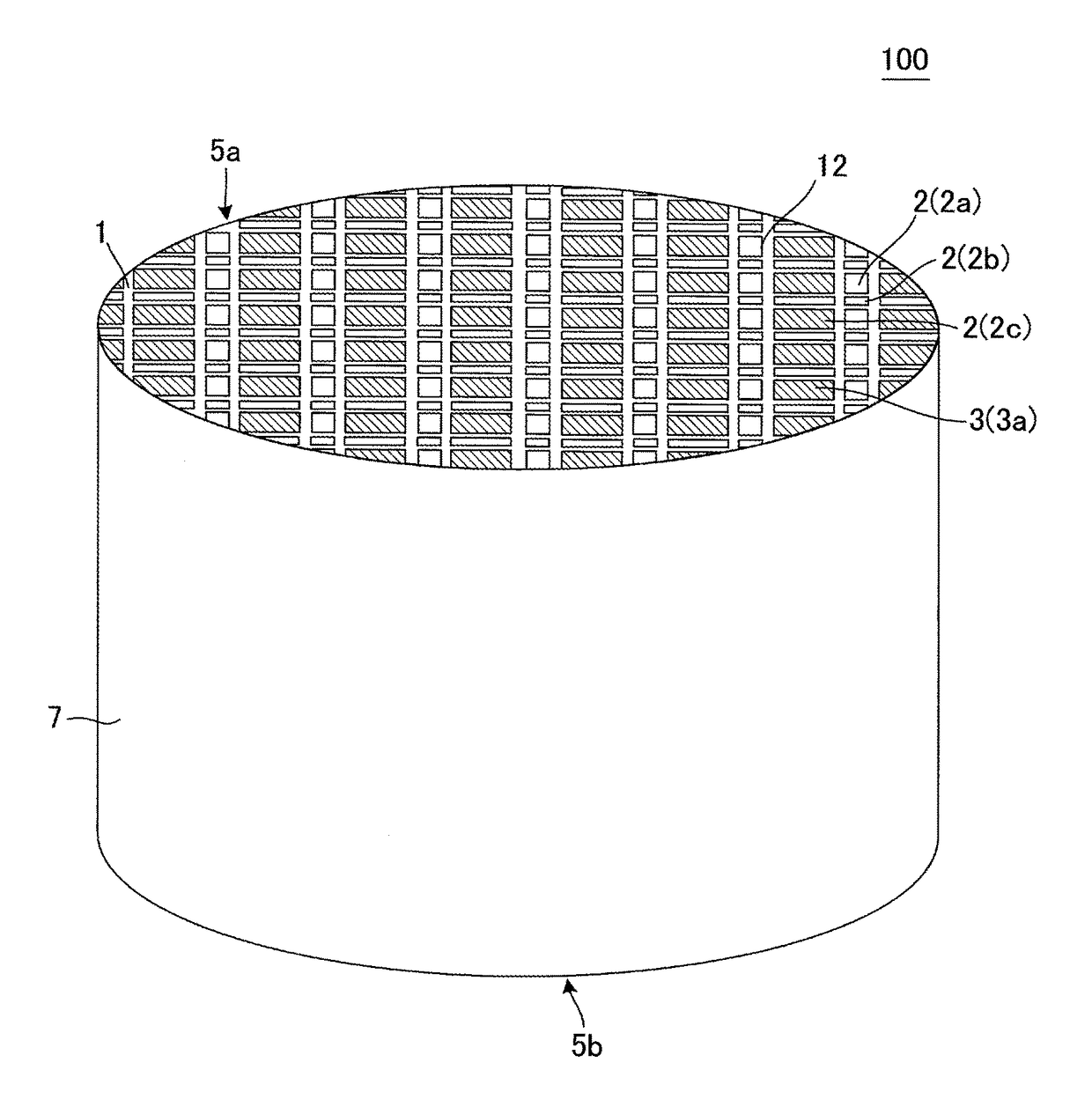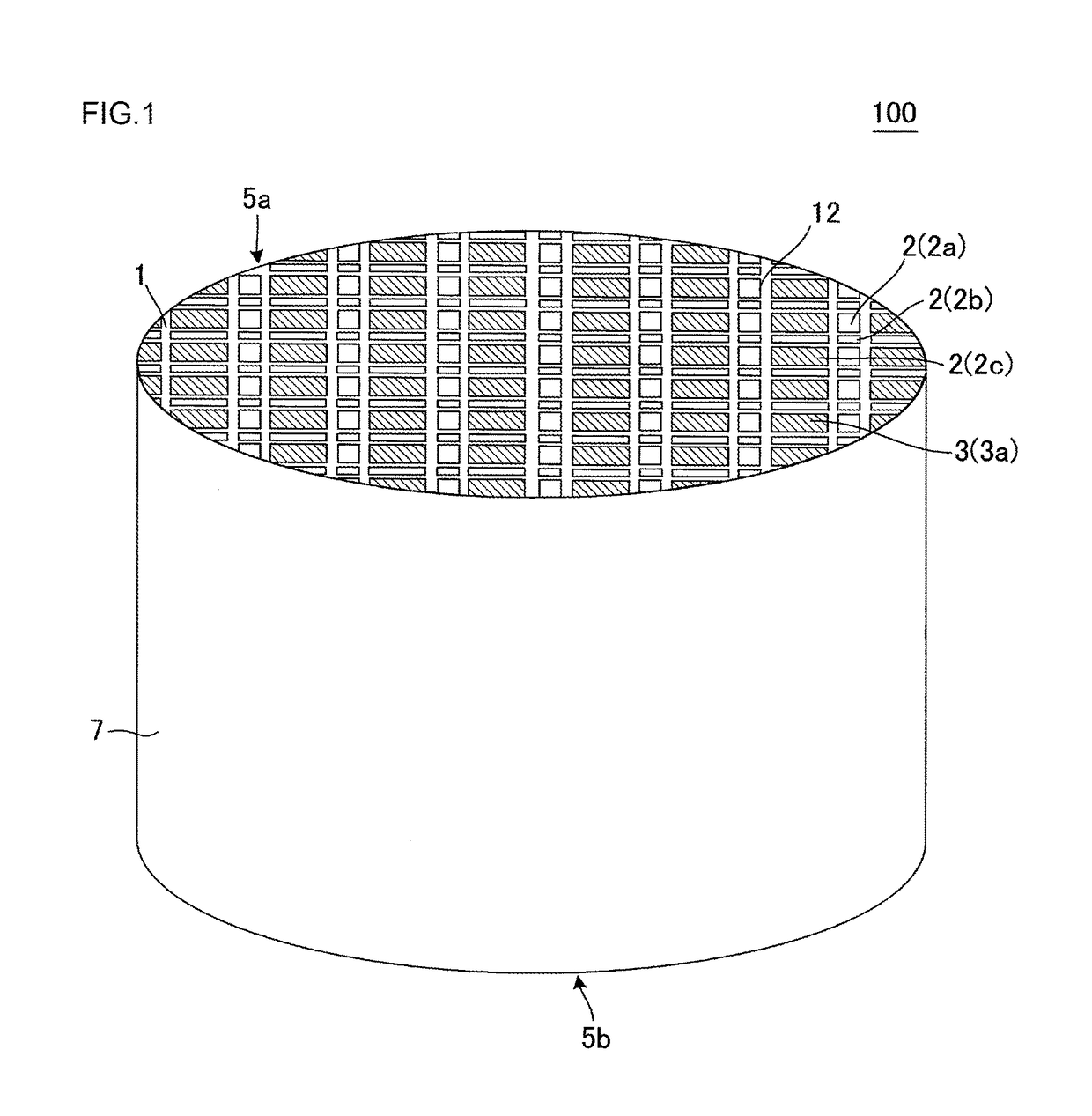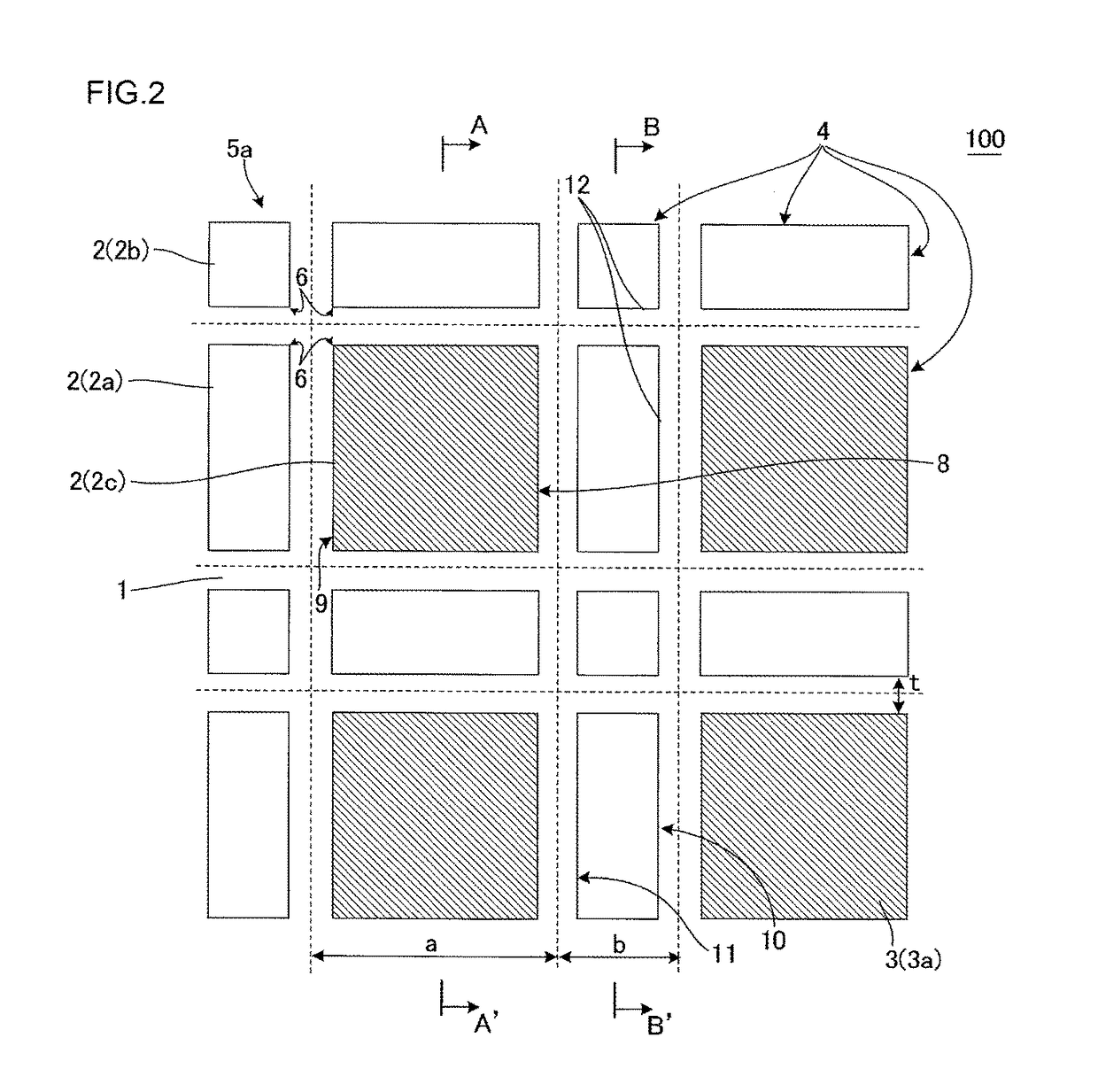Honeycomb filter
a filter and honeycomb technology, applied in the field of honeycomb filter, can solve the problems of insufficient filtration, insufficient filtration, insufficient filtration, etc., and achieve the effect of effectively preventing crack generation, reducing pressure loss, and efficient trapping and removing particulate matter
- Summary
- Abstract
- Description
- Claims
- Application Information
AI Technical Summary
Benefits of technology
Problems solved by technology
Method used
Image
Examples
example 1
[0084]As a ceramic raw material, a mixture of silicon carbide (SiC) powder and metal silicon (Si) powder at a mass ratio of 80:20 was prepared. To this ceramic raw material, hydroxypropoxyl methylcellulose as a binder and a water absorbable resin as a pore former were added, and water was also added, to prepare a forming raw material. The obtained forming raw material was kneaded by using a kneader, to obtain a kneaded material.
[0085]Next, the obtained kneaded material was formed by using a vacuum extruder and 16 rectangular pillar-shaped honeycomb segments each having such a plugging arrangement as shown in FIG. 2 and FIG. 4 were prepared. A sectional shape of each honeycomb segment in a direction perpendicular to a cell extending direction was a square of 36 mm×36 mm and the segment had a length of 152 mm. In addition, a partition wall center distance a shown in FIG. 2 was set to 2.2 mm, a partition wall center distance b was set to 0.76 mm and a partition wall thickness t was 0.3...
PUM
| Property | Measurement | Unit |
|---|---|---|
| center distance | aaaaa | aaaaa |
| center distance | aaaaa | aaaaa |
| thickness | aaaaa | aaaaa |
Abstract
Description
Claims
Application Information
 Login to View More
Login to View More - R&D
- Intellectual Property
- Life Sciences
- Materials
- Tech Scout
- Unparalleled Data Quality
- Higher Quality Content
- 60% Fewer Hallucinations
Browse by: Latest US Patents, China's latest patents, Technical Efficacy Thesaurus, Application Domain, Technology Topic, Popular Technical Reports.
© 2025 PatSnap. All rights reserved.Legal|Privacy policy|Modern Slavery Act Transparency Statement|Sitemap|About US| Contact US: help@patsnap.com



